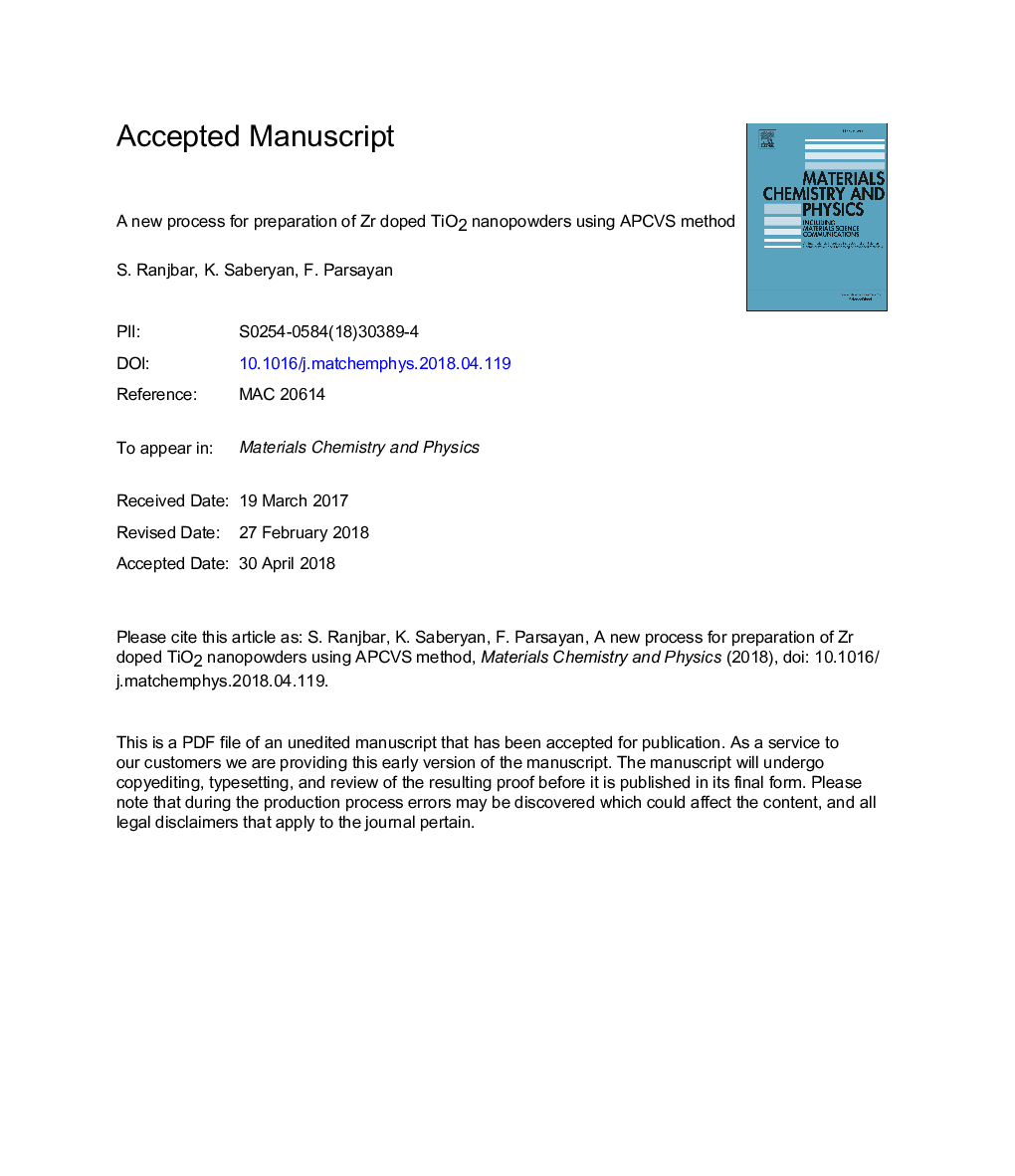| Article ID | Journal | Published Year | Pages | File Type |
|---|---|---|---|---|
| 7921529 | Materials Chemistry and Physics | 2018 | 33 Pages |
Abstract
Zirconium doped TiO2 (ZrâTiO2) nanoparticles at different temperatures from 400 to 1000â¯Â°C were successfully synthesized by the atmospheric pressure chemical vapor synthesis (APCVS) method. The structural properties of ZrâTiO2 nanoparticles were investigated by the X-ray diffraction (XRD), UV-vis Diffuse Reflectance Spectra (DRS), scanning electron microscopy (SEM), energy dispersive X-ray spectroscopy (EDX), Brunauer-Emmett-Teller (BET), transmission electron microscopy (TEM), inductively coupled plasma optical emission spectrometry (ICP), and Fourier transform infrared spectra (FTIR) techniques. The existence of Zr prevents the growth of nanoparticle crystals and maintains the stability of anatase in high temperatures up to 1000â¯Â°C. Up to 1000â¯Â°C, diffraction peaks assigned to the Zr species and rutile were not observed and also, the EDX analysis showed that only part of zirconium distributed on the surface of TiO2. Textural properties such as the surface area, average pore diameter and total pore volume of ZrâTiO2 nanoparticles are greater than un-doped TiO2. We also observed that absorption in the visible range occurs just for samples synthesized at 600 and 700â¯Â°C.
Related Topics
Physical Sciences and Engineering
Materials Science
Electronic, Optical and Magnetic Materials
Authors
S. Ranjbar, K. Saberyan, F. Parsayan,
